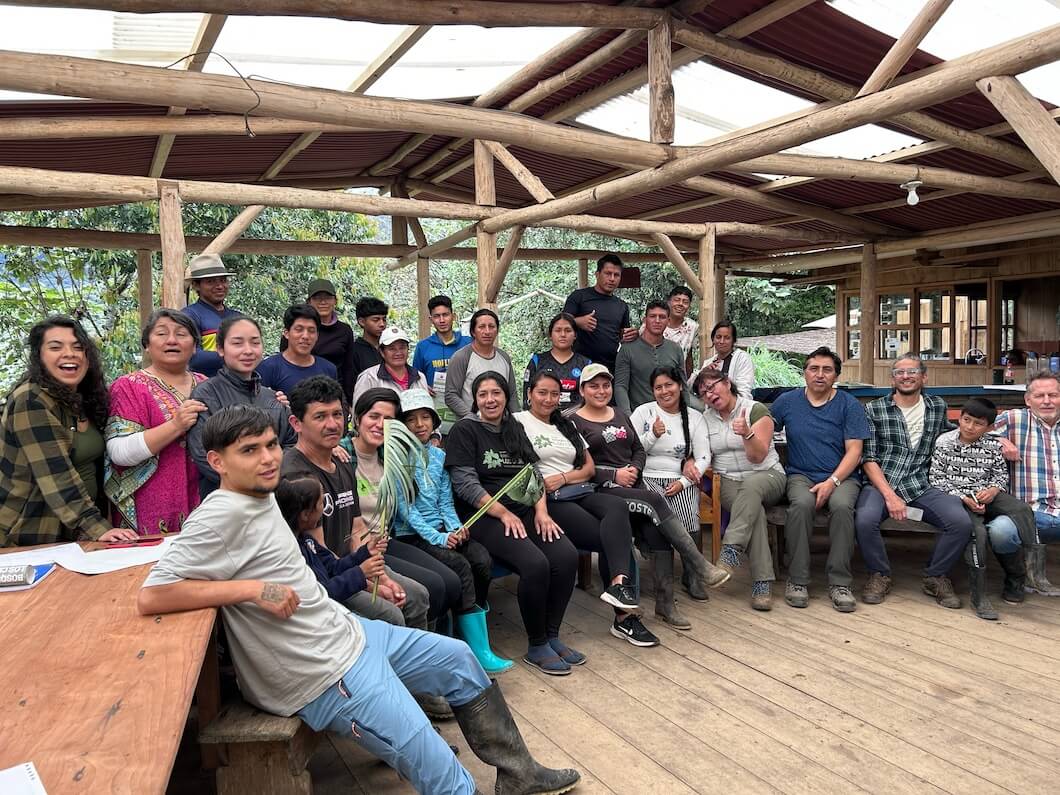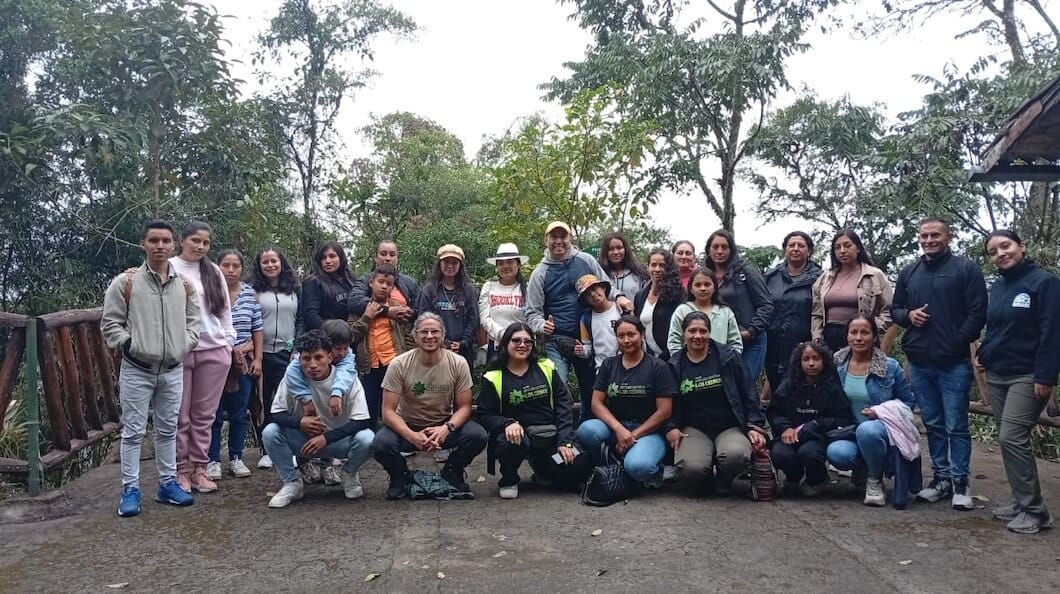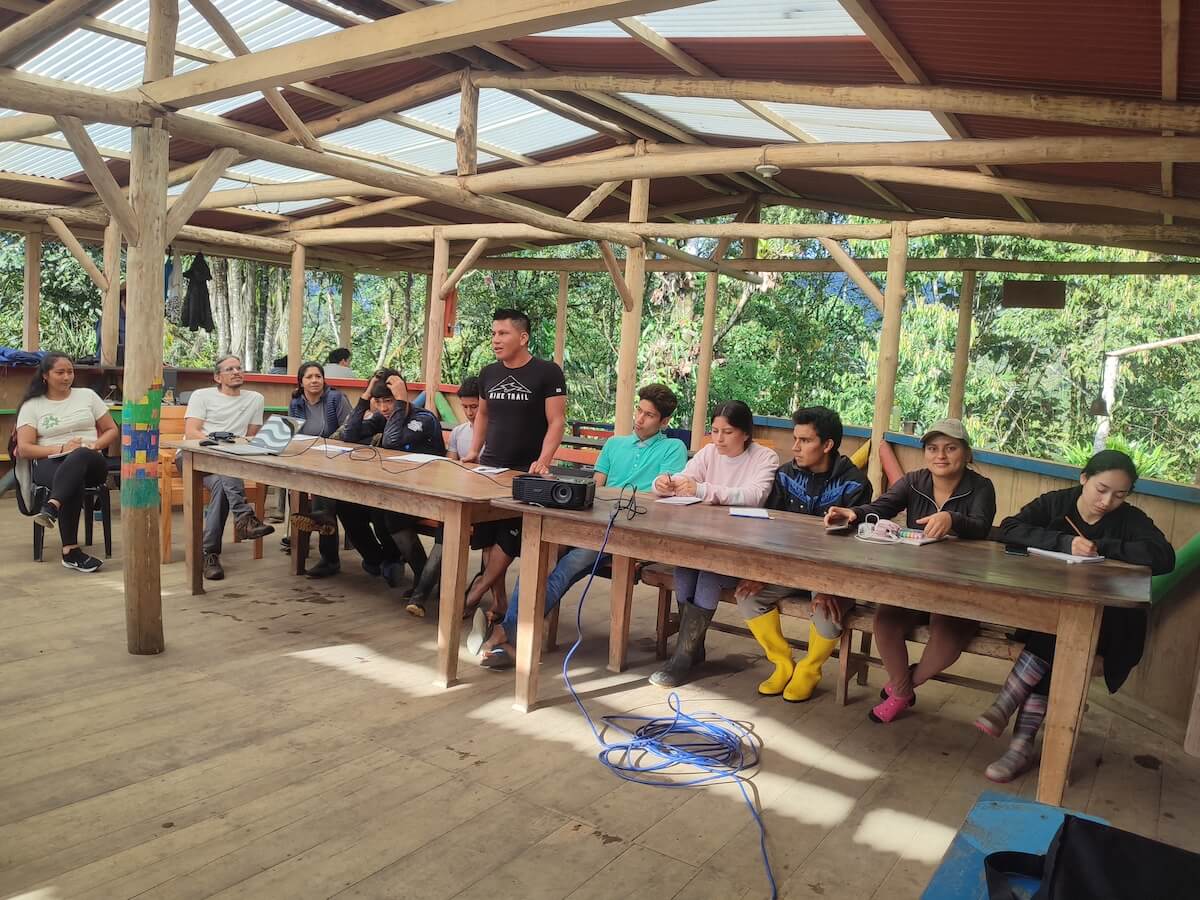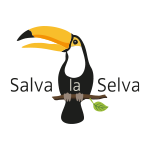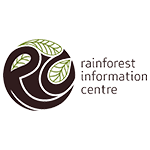by Monserratte Vásquez
Share
In September, the Los Cedros Scientific Station was the epicenter of a training course for “Honorific Inspectors,” run by the Ministry of the Environment, Water, and Ecological Transition (MAATE, initials in Spanish) and promoted by the Technical Secretary and Basins Council of the Intag-Toisán Conservation and Sustainable Use Area (ACUS-MIT, initials in Spanish), Toisán Corporation and the Municipality of Cotacachi.

Forty community members from the Intag-Manduriacos Valley participated in the course, voluntarily choosing to join in on the responsibility of protecting the ecosystems of ACUS-MIT in coordination with MAATE. In this important course that taught about control and monitoring tools, environmental regulations, and field implements and equipment provisions, seven of our fellow forest rangers of the Los Cedros Protected Forest took part, fulfilling the dictates of their Management Plan.

This is an initiative that, among many others, seeks to strengthen local capacities for community management of ACUS-MIT, an innovative proposal from the Inteña population that was elevated to a municipal ordinance in 2019. Its main objective is to practice participatory governance around the care and protection of the water and biodiversity of one of the most endemic and biologically diverse areas on the planet, where the last remnants of the western forest produce pure water and guarantee ecological balance on Earth.

Related post
Within the framework of the Project “Preparing Civil Society for the Co-Management and conservation of the Los Cedros Protected Forest – KBA ECU 14” financed by the Critical Ecosystem Partnership Fund (CEPF), we held the introductory workshop on the Birds of the BPLC (KBA ECU14) and of Ecuador in March as part of the forest […]
Twenty community members from the Valle de Los Manduriacos, who are training to be forest rangers, participated in the territory and participatory mapping workshop held in March. The workshop consisted of two phases: the first focused on political mapping, led by José Cueva, a member of the CIPBAT team, and the second on social mapping […]
Representatives from the Los Cedros Forest communities visited Yunguilla to learn about sustainable development, organization, and collective hope. Author Jose Cueva
In February, the second phase of the Community Forest Ranger Training Program began, with 10 young adults from last year’s program joined by 10 new young adults from the communities surrounding the Los Cedros Protected Forest, including Brillasol, Magdalena Alto, Chontal, Magdalena Bajo, Pueblo Unido, Paraíso, Río Verde, Villaflora, and Cielo Verde. Each council received […]

